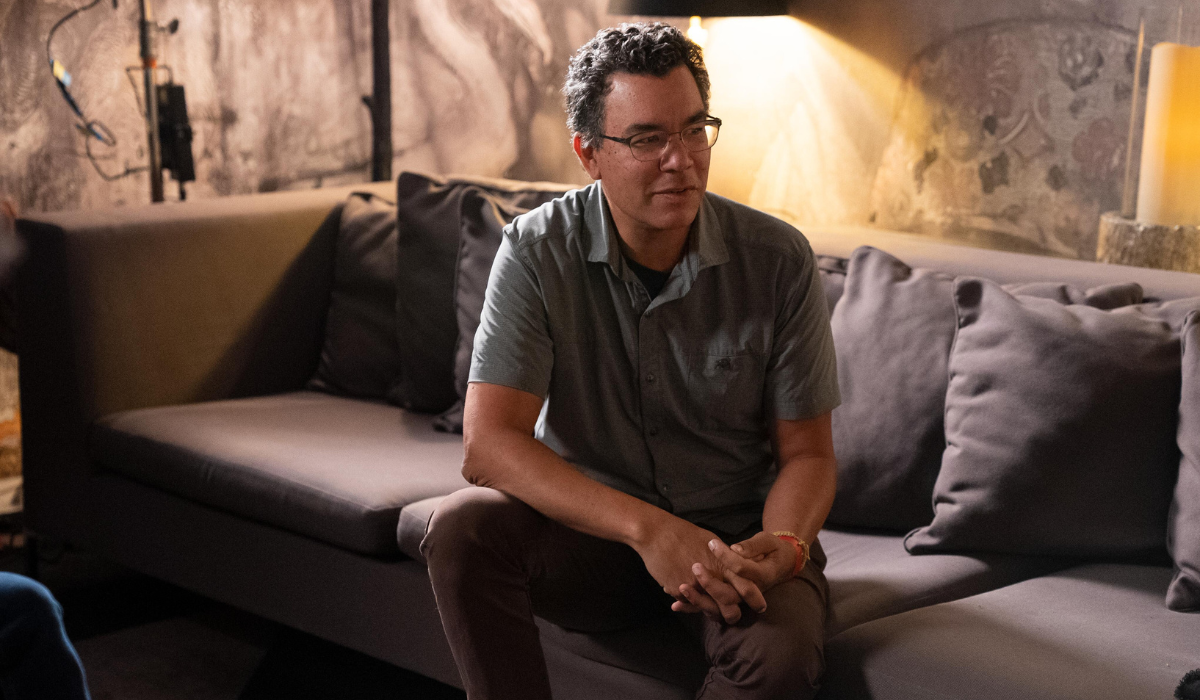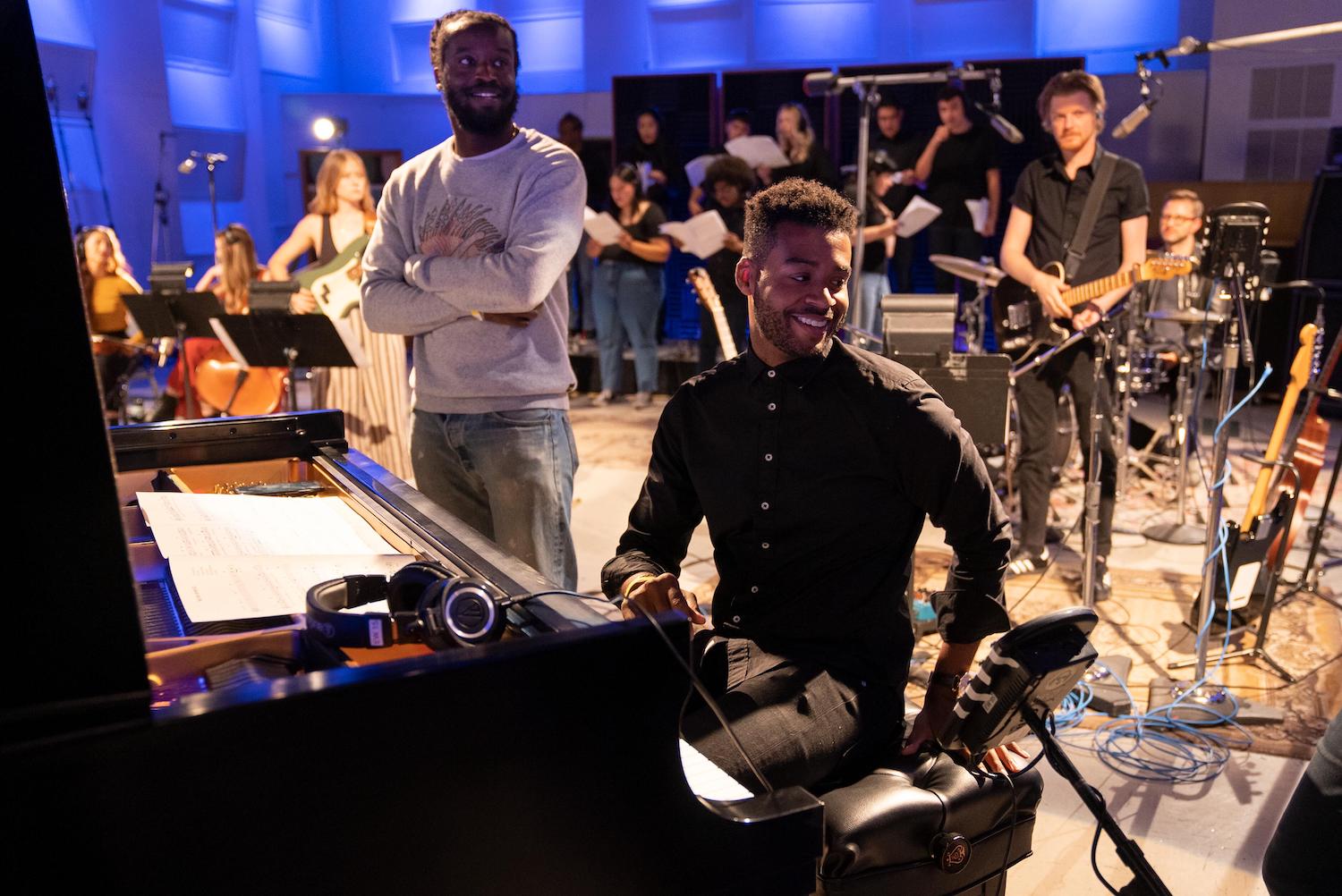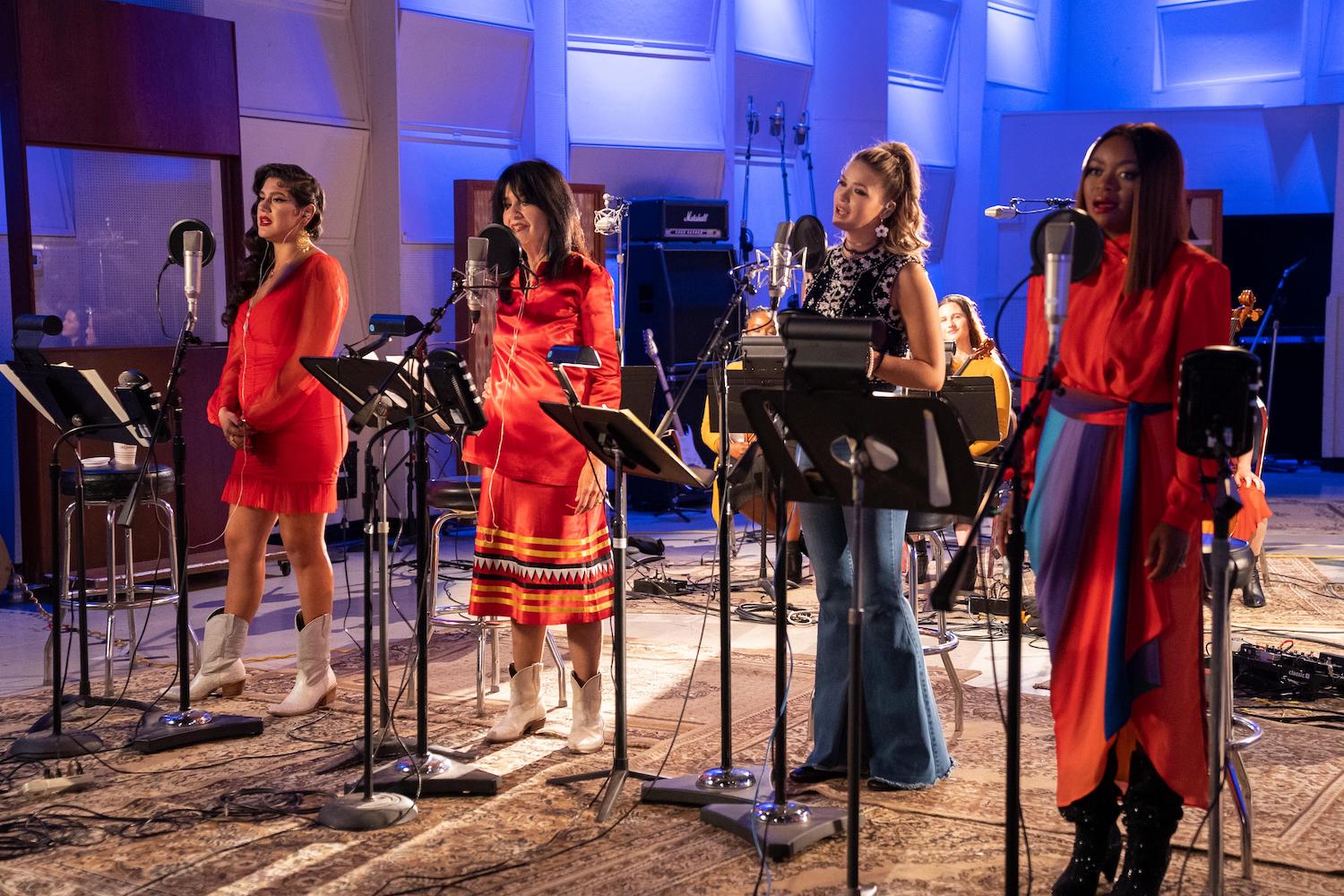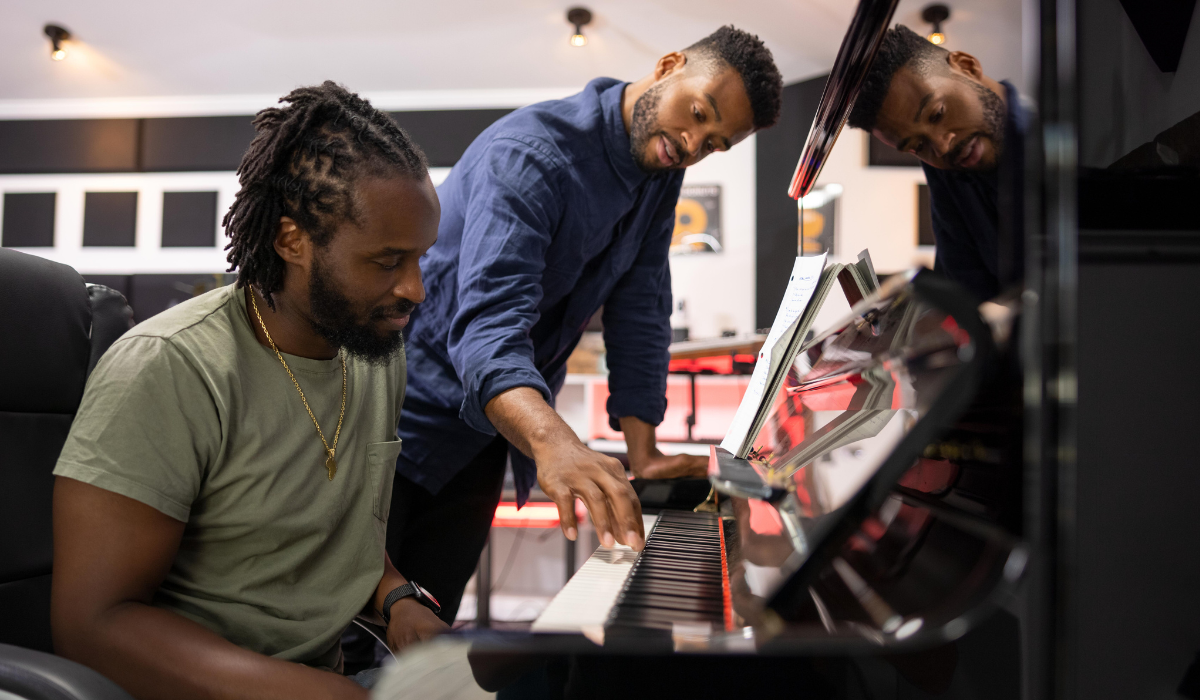These Two Musicians Traveled Across the Country in Search of America’s New Anthem. What They Found Might Surprise You
When describing many documentarian filmmakers, bold is usually a safe bet. But for director Peter Nicks, bold doesn't make a dent—at least, not when it comes to his latest project, Anthem. In this insightful music documentary, Nicks sets out to reimagine our national anthem. What does this song, with its lyrics that date back to 1814, really say? Does it represent every person and every experience in America?
Nicks tackles this giant undertaking with eyes wide open. He centers the film around two musicians, composer Kris Bowers and songwriter and producer DJ Dahi, who travel the nation to talk and jam with musicians from many backgrounds. The musicians explore conversations about The Star-Spangled Banner—but their words traverse sentiments and feelings of a bigger scope.
That is why Nicks' efforts, and ultimately the story Anthem tells, are more than bold. They're needed in our divided world today. "Every once in a while, I'd stop and think about the audacity of what we're trying to do. How do you create a song that represents an entire diverse country?" Nicks tells us over the phone. "That was a huge undertaking and one that humbled us. But for the most part, it was all excitement."

A CONVERSATION WITH PETER NICKS
Throughout the film, many people commented on how hard it must be to reimagine a new national anthem. How did you feel when you heard this?
It was mostly excitement. I've always wanted to make a music documentary. I fell into this one. I had been looking at some projects that had come to me to direct that were about a collision of patriotism and protest and how Americans were feeling positively and negatively about rethinking our symbols, flags, songs, buildings, and statues. From there, I started poking around at The Star-Spangled Banner and discovered information I had never known: that the music underlying the words that Francis Scott Key wrote was based on a British parlor song. Then we found this comedy bit by Roy Wood, which was provocative.
I've always wanted my storytelling to approach complex topics with an even hand. I like to say I was born into the story of race in America. I'm mixed race—my birth mother is white, and my birth father is black. I was born in 1968 when it was very difficult for a white woman to marry a black man and have a child. So my birth mother put me up for adoption, and I was raised by a black family outside of Boston. I went to all-white private schools, then Howard University. I married a refugee from Laos, and our kids are White, Asian, and Black. So in my journeys as a journalist, I have been around different people from the political spectrum from liberal to conservative and back again. I wanted to explore where these tensions and divisions come from. I knew it had to do with the representation of identity.
A lot of the troubles that we have in our country are coming from people who may be feeling threatened and that their way of life and culture are being challenged. Approaching that topic with music and the idea of not canceling or replacing something but rather creating something could be potentially unifying.

Near the film's end, six musicians from wildly different backgrounds—Kris, DJ Dahi, Ruby Amanfu, La Doña, Joy Harjo, and Charity Bowden—gather to create the new anthem. A healthy debate sparked between some because of unique perspectives and feelings toward America. Will you talk about gathering this group and what this tension brought to the project?
I wasn't sure what was going to happen. We knew there would be some tension in the process. Making both the movie and the song took place in stages. The first stage was Dahi and Kris going out into the country and having jam sessions with different musicians playing different styles of music who represented different points on the political spectrum. Then when it came time to write the song, Kris and Dahi, who are African American men, felt it was important to have the voices of women. We knew Joy Harjo, the first Native American Poet Laureate, would be in that room. We met Charity Bowden in Nashville, which was serendipitous. There was something about her youth and how she spoke about her family and community that felt very real. And then Cecilia [La Doña] came on because my [producing] partner, Ryan Coogler, and I have been telling stories in the Bay Area for many years where there is a very rich tradition of activism that Cecilia is a part of.
They all took risks to participate in the project because they had to trust me, they had to trust this process, and they had to go back and face their communities after participating in a project reimagining a national anthem. So that tension was challenging. But it was critical to inform the narratives and the conversations that would ultimately be in the lyrics of the song.

You've dived deep into many different aspects of humanity and society with your documentary work, from exploring police departments to crime to NBA stars and beyond. What did you learn from this project that surprised you?
It was a reminder of how similar we are. This makes me think of Ryan Coogler, a very special artist. The first film we worked on with our company Proximity Media was Judas and the Black Messiah, a film about Fred Hampton, a Black Panther. Hampton went into the Union halls in Ohio and West Virginia and told a story to the working-class conservative White men and women there. Those men and women related to Hampton's story about a lack of access to the American dream. Hampton was building a coalition. That is a powerful reminder of how similar we are. We forget this because of the distortions in social media and media networks and how we're all fragmented.
I found this reminder in those connections with music: how gospel and church and faith and spirituality tie together like Native American music, country, music, blues, and R&B. Those are all strains and connections that are very powerful. As I was on this road trip with these artists, watching their process, it reminded me of our connection. The idea that music brings us together and that Americans are more similar than we are different may be a cliché. And it may be difficult for people to believe right now, given we're in a difficult and cynical space. But for me, this was a reminder of how true that is.
Peter Nicks is a documentary filmmaker, producer, and co-founder of Proximity Media. You can learn more at proximitymedia.com and watch his most recent film, Anthem, on HULU.
Please note that we may receive affiliate commissions from the sales of linked products.



